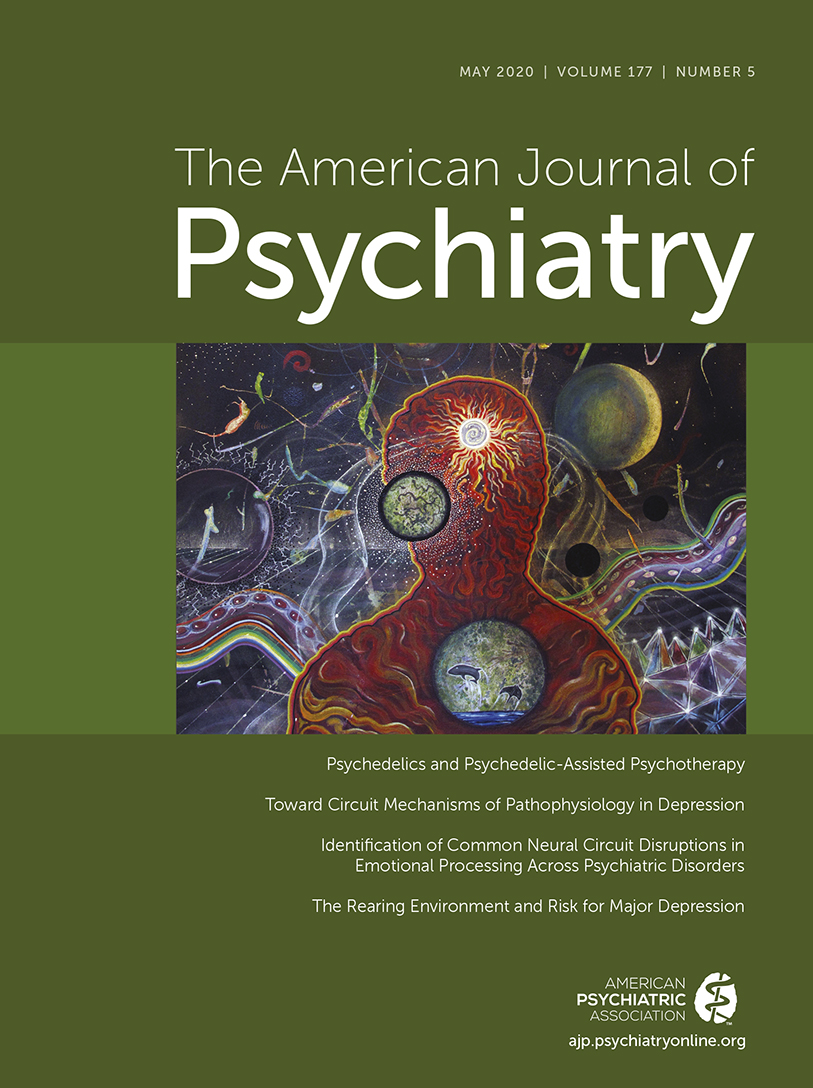T
o the E
ditor: The article on theta-burst transcranial magnetic stimulation for posttraumatic stress disorder (PTSD) by Noah S. Philip and colleagues (
1), published in the November 2019 issue of the
Journal, investigates a potentially promising new treatment for PTSD. The authors are to be commended for designing a study to apply this emerging technology to the disabling condition of PTSD.
However, we want to make sure that an important point concerning the trial is not overlooked and to ask for the authors to comment on the significance of this aspect of their article. Specifically, it appears to our reading that for their primary efficacy outcome (Clinician-Administered PTSD Scale for DSM-5 administered at 2 weeks, using analysis of variance, as described in the Statistical Analysis section), the authors found an effect size of only −0.12 (Cohen’s d), which was not statistically significant (p=0.61). It is also worth noting that if a correction for multiple comparisons is done, it is doubtful whether any of the outcomes in Table 2 in the article, including the Social and Occupational Functioning Assessment Scale measure (p reported as 0.04), reach statistical significance. If this is a correct reading of their results, we maintain it would have been preferable for the authors to better emphasize these essentially negative findings for their primary analysis when discussing their results (the Discussion section mostly focuses on the follow-up analyses and neuroimaging findings).
Furthermore, it appears that larger and more significant effects are observed for the PTSD outcomes using linear mixed models. However, if we understand Table 3 correctly, it appears that these results are obtained for a sample that pools the half of the sample who received sham treatment and now are being treated “open label” (that is, the 1- and 2-week results include the results for individuals who know that they are receiving active treatment). Given that this study was using a novel and likely exciting new technology, it is not unreasonable to expect that many participants may have reported a strong positive effect based on nonspecific effects of feeling that now they were receiving an effective treatment. Perhaps a better examination of whether the intervention has its benefits largely in the first week of treatment, as the authors observe based on their pooled, blinded, and unblinded sample, could be obtained by presenting the results from the PTSD Checklist for DSM-5 for week 1 compared with week 2, active treatment compared with sham, for only the 2-week blinded phase. This would inform readers as to whether a strong week 1 effect was also observed when participants were blind to the treatment administered, rather than the strong week 1 effect possibly being caused largely by including in the sample individuals who were unblinded to the treatment. Could the authors please provide this information?

